
Franklin Delano Roosevelt, commonly known as FDR, was an American statesman and politician who served as the 32nd president of the United States from 1933 until his death in 1945. He was a member of the Democratic Party and is the only U.S. president to have served more than two terms. His initial two terms were centered on combating the Great Depression, while his third and fourth saw him shift his focus to America's involvement in World War II.

Eileen Evelyn Greer Garson was a British-American actress and singer. She was a major star at Metro-Goldwyn-Mayer who became popular during the Second World War for her portrayal of strong women on the homefront; listed by the Motion Picture Herald as one of America's top-10 box office draws from 1942 to 1946.
Isadore "Dore" Schary was an American playwright, director, and producer for the stage and a prolific screenwriter and producer of motion pictures. He directed one feature film, Act One, the film biography of his friend, playwright and theater director Moss Hart. He became head of production at Metro-Goldwyn-Mayer and replaced Louis B. Mayer as president of the studio in 1951.
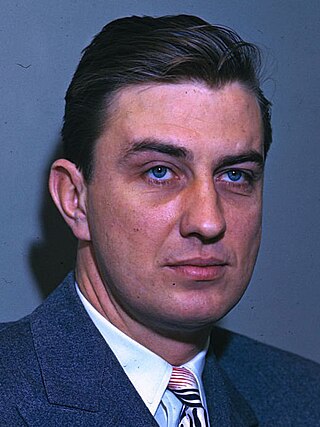
Franklin Delano Roosevelt Jr. was an American lawyer, politician, and businessman. He served as a United States congressman from New York from 1949 to 1955 and in 1963 was appointed United States Under Secretary of Commerce by President John F. Kennedy. He was appointed as the first chairman of the Equal Employment Opportunity Commission from 1965 to 1966 by President Lyndon B. Johnson. Roosevelt also ran for governor of New York twice. He was a son of President Franklin D. Roosevelt and First Lady Eleanor Roosevelt, and served as an officer in the United States Navy during World War II.
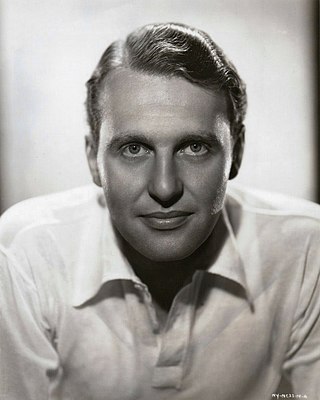
Ralph Rexford Bellamy was an American actor whose career spanned 65 years on stage, film, and television. During his career, he played leading roles as well as supporting roles, garnering acclaim and awards, including a Tony Award for Best Actor in a Play for Sunrise at Campobello as well as Academy Award for Best Supporting Actor nomination for The Awful Truth (1937).

Warm Springs is a 2005 made-for-television biography drama film directed by Joseph Sargent, written by Margaret Nagle, and starring Kenneth Branagh, Cynthia Nixon, Kathy Bates, Tim Blake Nelson, Jane Alexander, and David Paymer. The screenplay concerns U.S. President Franklin D. Roosevelt's 1921 illness, diagnosed at the time as polio, his struggle to overcome paralysis, his discovery of the Warm Springs resort, his work to turn it into a center for the rehabilitation of polio victims, and his resumption of his political career. Roosevelt's emotional growth as he interacts with other disabled people at Warm Springs prepares him for the challenges he will face as president during the Great Depression.

Sara Ann Roosevelt was the second wife of James Roosevelt I, the mother of President of the United States Franklin Delano Roosevelt, her only child, and subsequently the mother-in-law of Eleanor Roosevelt.
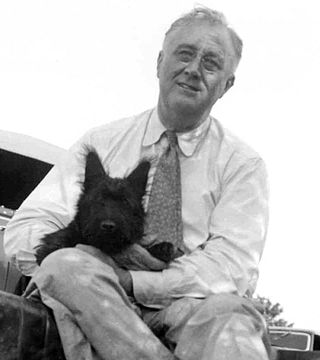
Fala, a Scottish Terrier, was the dog of United States president Franklin D. Roosevelt. One of the most famous presidential pets, Fala was taken to many places by Roosevelt. Given to the Roosevelts by a cousin, Fala knew how to perform tricks; the dog and his White House antics were mentioned frequently by the media and often referenced by Roosevelt and his wife Eleanor. Fala outlived Roosevelt by seven years and was buried near him.

Roosevelt Campobello International Park preserves the house and surrounding landscape of the summer retreat of Franklin D. Roosevelt, Eleanor Roosevelt and their family. It is located on the southern tip of Campobello Island in the Canadian province of New Brunswick, and is connected to the mainland by the Franklin Delano Roosevelt Memorial Bridge, at Lubec, Maine in the United States.
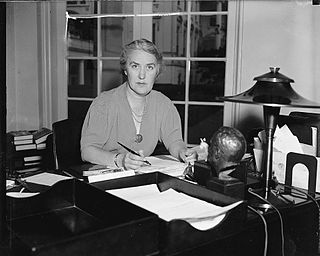
Marguerite Alice "Missy" LeHand was a private secretary to U.S. President Franklin D. Roosevelt (FDR) for 21 years. According to LeHand's biographer Kathryn Smith in The Gatekeeper, she eventually functioned as White House Chief of Staff, the only woman in American history to do so.
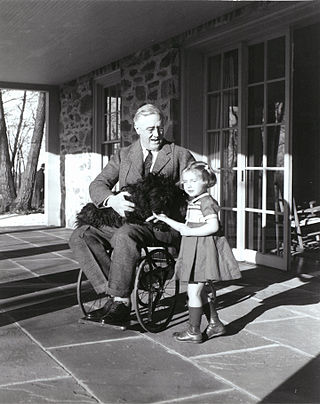
Franklin D. Roosevelt, later the 32nd president of the United States from 1933 to 1945, began experiencing symptoms of a paralytic illness in 1921 when he was 39 years old. His main symptoms were fevers; symmetric, ascending paralysis; facial paralysis; bowel and bladder dysfunction; numbness and hyperesthesia; and a descending pattern of recovery. He was diagnosed with poliomyelitis and underwent years of therapy, including hydrotherapy at Warm Springs, Georgia. Roosevelt remained paralyzed from the waist down and relied on a wheelchair and leg braces for mobility, which he took efforts to conceal in public. In 1938, he founded the National Foundation for Infantile Paralysis, leading to the development of polio vaccines. Although historical accounts continue to refer to Roosevelt's case as polio, the diagnosis has been questioned in the context of modern medical science, with a competing diagnosis of Guillain–Barré syndrome proposed by some authors.
Sunrise at Campobello is a 1958 play by American producer and writer Dore Schary based on U.S. President Franklin Delano Roosevelt's struggle with polio. The film version was released in 1960.
The 18th Golden Globe Awards, honoring the best in film for 1960, were held on March 16, 1961.
Vincent Julian Donehue was an American director noted mainly for his theater work, with occasional film and television credits.

Eleanor and Franklin is a 1976 American television miniseries starring Edward Herrmann as Franklin D. Roosevelt (FDR) and Jane Alexander as Eleanor Roosevelt which was broadcast on ABC on January 11 and 12, 1976. It is the first part in a two-part "biopic" miniseries based on Joseph P. Lash's biography and history from 1971, Eleanor and Franklin, based on their correspondence and recently opened archives. Joseph Lash was Eleanor's personal secretary and confidant. He wrote several books on the Roosevelts including some on both Eleanor and Franklin individually and was also a controversial activist in his own right in leftist, liberalism, social and labor issues of the era.
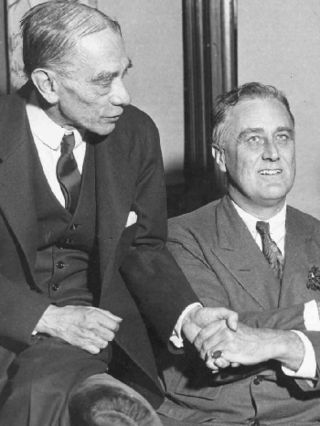
Louis McHenry Howe was an American reporter for the New York Herald best known for acting as an early political advisor to President Franklin D. Roosevelt.
The 32nd National Board of Review Awards were announced on December 22, 1960.
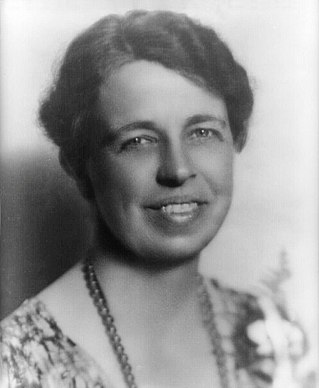
Anna Eleanor Roosevelt was an American political figure, diplomat, and activist. She was the first lady of the United States from 1933 to 1945, during her husband President Franklin D. Roosevelt's four terms in office, making her the longest-serving first lady of the United States. Through her travels, public engagement, and advocacy, she largely redefined the role of First Lady. Roosevelt then served as a United States Delegate to the United Nations General Assembly from 1945 to 1952, and took a leading role in designing the text of the Universal Declaration of Human Rights. In 1948 she was given a standing ovation by the assembly upon their adoption of the Declaration. President Harry S. Truman later called her the "First Lady of the World" in tribute to her human rights achievements.

Eleanor and Franklin: The White House Years is a 1977 American Atelevision film and a sequel to Eleanor and Franklin (1976). Originally airing on March 13, 1977, it was part of a 2-part biographical film directed by Daniel Petrie based on Joseph P. Lash's Pulitzer prize-winning biography, Eleanor and Franklin, chronicling the lives of the 32nd U.S. President and the first lady. Joseph Lash was a secretary and confidant of Eleanor and wrote other books on the couple.
Franklin D. Roosevelt, the 32nd President of the United States, has inspired or been portrayed in numerous cultural works.
















